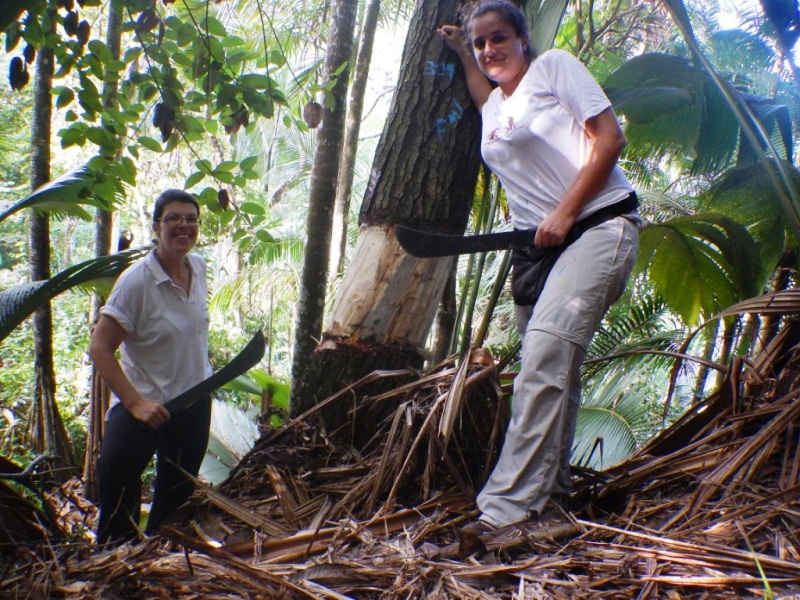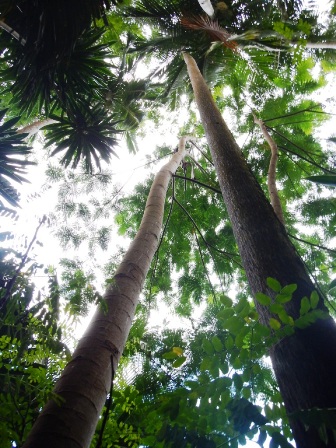Control of invasive plant species starts with Albizia |14 July 2014

After months of experiments, trials and discussions, the invasive species team has started the first integral control of invasive plant species in the Vallée de Mai on Praslin. The first step of this plan is the elimination of the source of propagules from the most threatening reproductive invasive trees. The recent completion of the big tree survey conducted by the team showed the distribution, abundance and individual characterisation of six key introduced species in the Vallée de Mai: albizia (Falcataria moluccana), santol (Sandoricum koetjape), jackfruit (Artocarpus heterophyllus), bwa zonn (Alstonia macrophylla), lagati (Adenanthera pavonina) and kalis dipap (Tabebuia pallida).
The first step of this plan is the elimination of the source of propagules from the most threatening reproductive invasive trees. The recent completion of the big tree survey conducted by the team showed the distribution, abundance and individual characterisation of six key introduced species in the Vallée de Mai: albizia (Falcataria moluccana), santol (Sandoricum koetjape), jackfruit (Artocarpus heterophyllus), bwa zonn (Alstonia macrophylla), lagati (Adenanthera pavonina) and kalis dipap (Tabebuia pallida).
This information was combined with a review of available research and advice from local naturalists to identify the most effective methods of managing adult trees of these species. The least abundant of the six species, albizia, was the first tree to be managed.
Albizia is native to the Moluccas, New Guinea, New Britain, and the Solomon Islands. It was introduced to Seychelles in around 1910 for reforestation and timber production. Even though it is not yet very abundant in the Vallée de Mai, albizia is highly invasive in the tropics, including in Seychelles, where it is considered to be a problematic species. The impacts of albizia are due to its rapid growth, among the fastest on the planet; reaching 35m in height after just 10 years. This allows it to out-compete slow-growing native trees as its tall, broad canopy shades other plants.
The survey identified 17 albizia trees inside the Vallée de Mai and two in the surrounding firebreak. Ring-barking, or ‘girdling’, has been successfully used in Seychelles to treat albizia and was the chosen method to tackle this species.
Ring-barking involves removing a 50cm high layer of bark from the entire circumference of the tree. This way, the tree is prevented from transporting mainly sugars from leaves to roots, which causes a gradual collapse and rotting of fallen parts.
The invasive species team ring-barked all of the albizia trees. The trees will be re-visited to check their deterioration, the opening up of any canopy gaps, seedling germination in the surrounding area, and post-treatment defence mechanisms by the trees, such as re-growth of bark or mass fruit production.
The invasive species team will afterwards continue to treat the other target species, adapting the strategies as needed and including other species, such as vya tang, cinnamon and guava to eventually achieve an invasive plant species free Vallée de Mai.
Source: SIF




